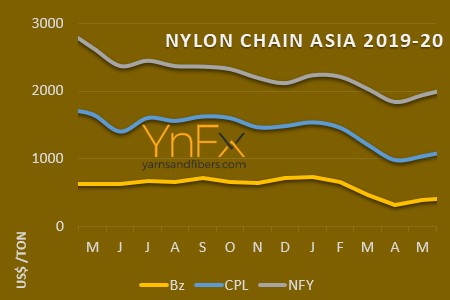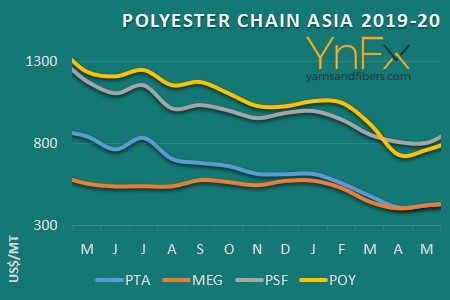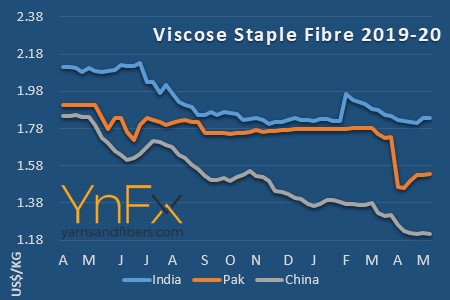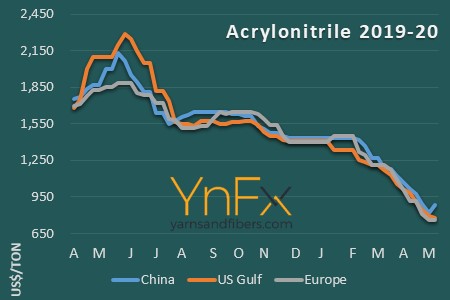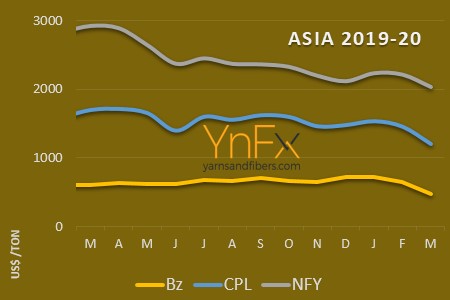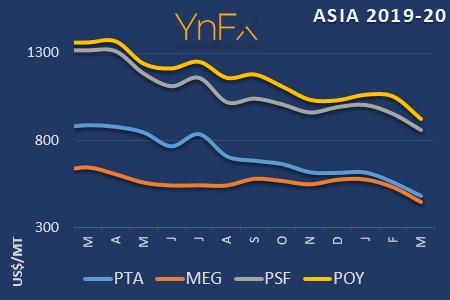
Manmade fibres on way to dethrone king cotton
YarnsandFibers News Bureau 2014-07-30 11:12:55 –Start of Cotton Era
The history of cotton can be traced as far back as 4500 Before Common Era (BCE). It was first introduced to Europe but became mainstream and part of everyday life only after the industrial revolution. By the end of 18th century, cotton dominated the world and accounted for over 80 per cent of textile consumption. Cotton's versatility permitted it to be blended with linen and be made into velvet, allowing for exquisitely patterned dresses for women. It became the standard fashion and was also accessible to the general public.
But today, the domination that cotton once enjoyed and its crown is being threatened. More and more producers and buyers are embracing man-made or synthetic fibres, which have become integral to the lives we lead today and continue to grow in popularity globally.
Cotton losing out to man-made fibres
Looks like golden days of cotton have started fizzling. After years of being at the top and being utilized as a textile fibre of choice, cotton’s share of all fibre consumption has steadily declined. Its usage share plunged from 70 per cent during the 1950’s to just below 50 per cent by early in the 1980’s. Meanwhile, man-made fibres have continued to grow in popularity. Today, as per rough estimates, man-made fibres make 65 per cent of global fibre production. Unites States, in 2014, is expected to import more clothing made from synthetic fibres than cotton in over 20 years.
The US Department of Agriculture (USDA) has said that in 2014-15 global cotton production will fall for the third consecutive season (Figure 1). Although depicted at its lowest in 5 years, production outlook remains strong for consumption.

In 2014-15, the consumption of cotton globally is envisioned at 111.8 million bales or 2 per cent increase from the previous year’s season.
Meanwhile, decline in cotton’s share of global fibre consumption over the last several years can be largely attributed to high cotton prices, especially in comparison to man-made fibres. The International Cotton Advisory Committee (ICAC) reported that 2010 brought the largest single-year decline on record, in both absolute and percentage terms, when cotton prices reached record highs. Although cotton prices have fallen dramatically since then, they are still high compared to manmade fibres. This year, the prices of cotton have fallen 20 per cent. Prices for a Pound of cotton have averaged 81 cents a pound over the past two years as the global supplies have reduced. US sellers too have started using less cotton in their imported products.
A senior economist at the International Cotton Advisory Committee, a Washington-based group that counsels cotton-growing countries, Alejandro Plastina said, “Consumption of other fibres like polyester is expected to grow faster, and cotton's share is expected to continue declining.”

The analysts are not wrong. The use of synthetic fibre and its market share has increased because of its low price, making it more suitable and the no.1 preference for the consumers.
Figure 2 throws light on the declining use of cotton by the US mills with exports making up for nearly 75 per cent of the demand for U.S. cotton. It can be inferred that the outlook for the US cotton markets is largely impacted by the global market developments.
Meanwhile, imported textiles account for a major portion of the US retail market, and a recent dip in imports clearly indicates the overall decline in the market situation.
"I don't see that pendulum swinging back to a cotton-rich blend anytime soon," says Gary Raines, chief textile and fibre economist at financial-services firm INTL FCStone in Nashville. "You're likely to see more of a shifting to synthetics that could weigh on cotton prices."
In India too synthetic fibres are the future. Even during the global economic turmoil, India’s Rs 120,000 crore synthetic textile industry grew at 5 per cent and is now quickly narrowing the conspicuous disparity between use of cotton and synthetics in the textile industry.
Chief Executive Officer and President of Sutlej Textiles and Industries Ltd, promoted by K K Birla, S K Khandelia said, “Due to limitation of land for growing cotton to meet the increasing demand for domestic and export markets, synthetic textiles is the future of textile industry in India and hence needs to be encouraged as per the National Fibre Policy.”
Going gets tough for cotton with reasonable, “breathable” man-made fibres
Cotton prices have reached the critical point and are the most important reason for the industry to shift towards synthetic fibres. Recently, fall in cotton prices too failed to revive the fate of the fibre and reports suggest that in 2014, the imports of synthetic clothing may overtake cotton garments for the first time in over a decade.
Despite the fall in cotton prices in the US to less than USD$1 a lb, synthetics in China, the world's top textile market, were still cheaper at about US cents 68 per pound. As a result, synthetic imports increased by more than 20 per cent over the past three years and cotton imports have fallen by 14 per cent.
Also, man-made fibres have evolved and are more ‘breathable’. They have easily replaced cotton from our lives and have become part of our daily existence.
Yoana Baraschi, a fashion designer from Romania who has showrooms representing her collection in New York, Los Angeles, Dallas, Atlanta, and is sold by more than 600 retailers worldwide said, “Polyester yarn has evolved immensely. I believe fashion-savvy consumers in general are completely comfortable with it and wearing it.”
Market Intelligence
Ask for free sample Report

experience
Customer Base
dedicated team
Countries Served Worldwide



